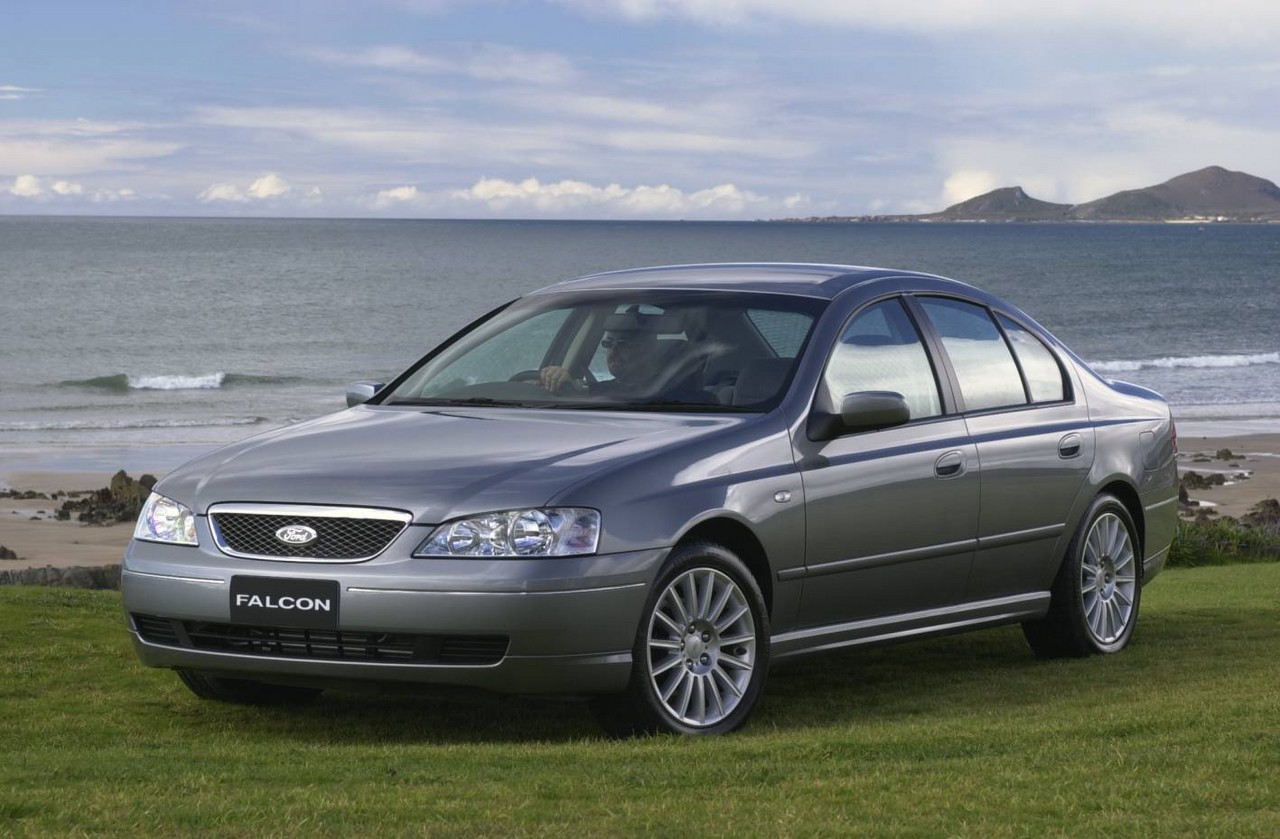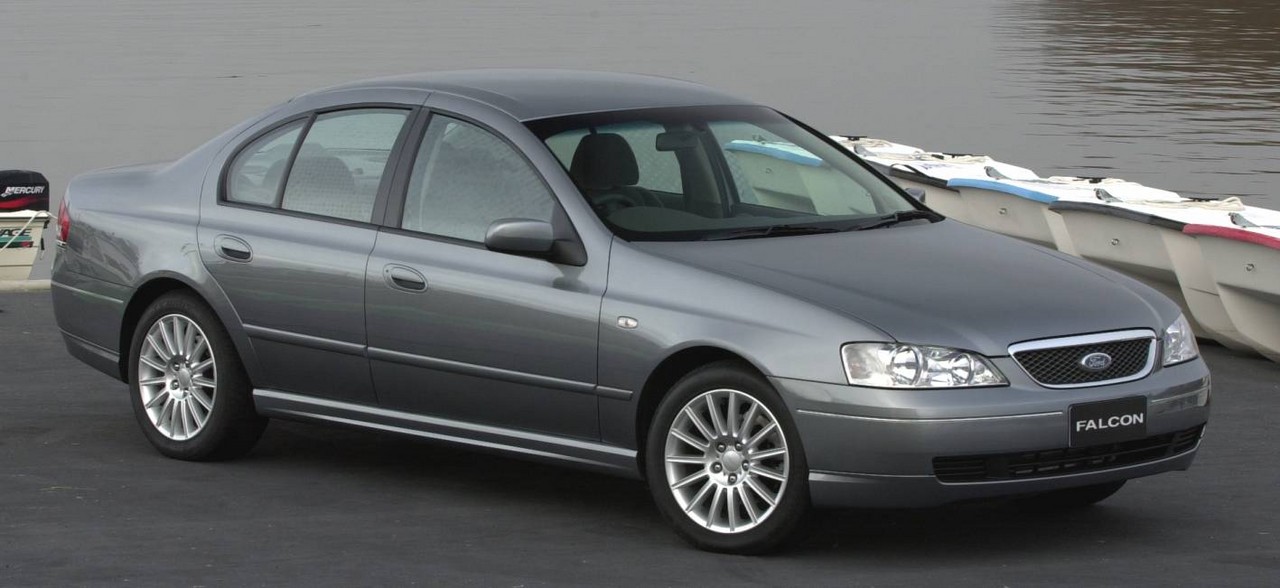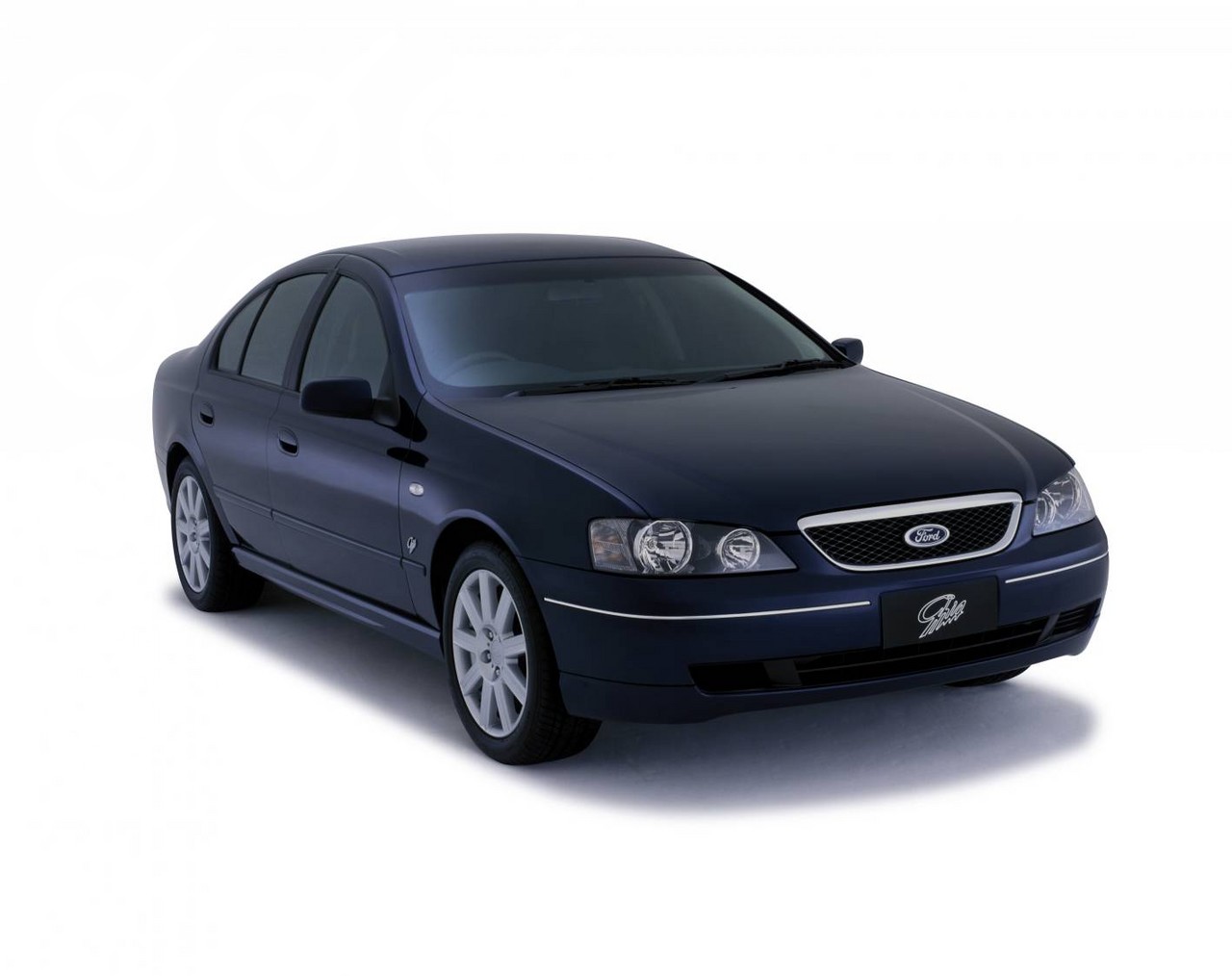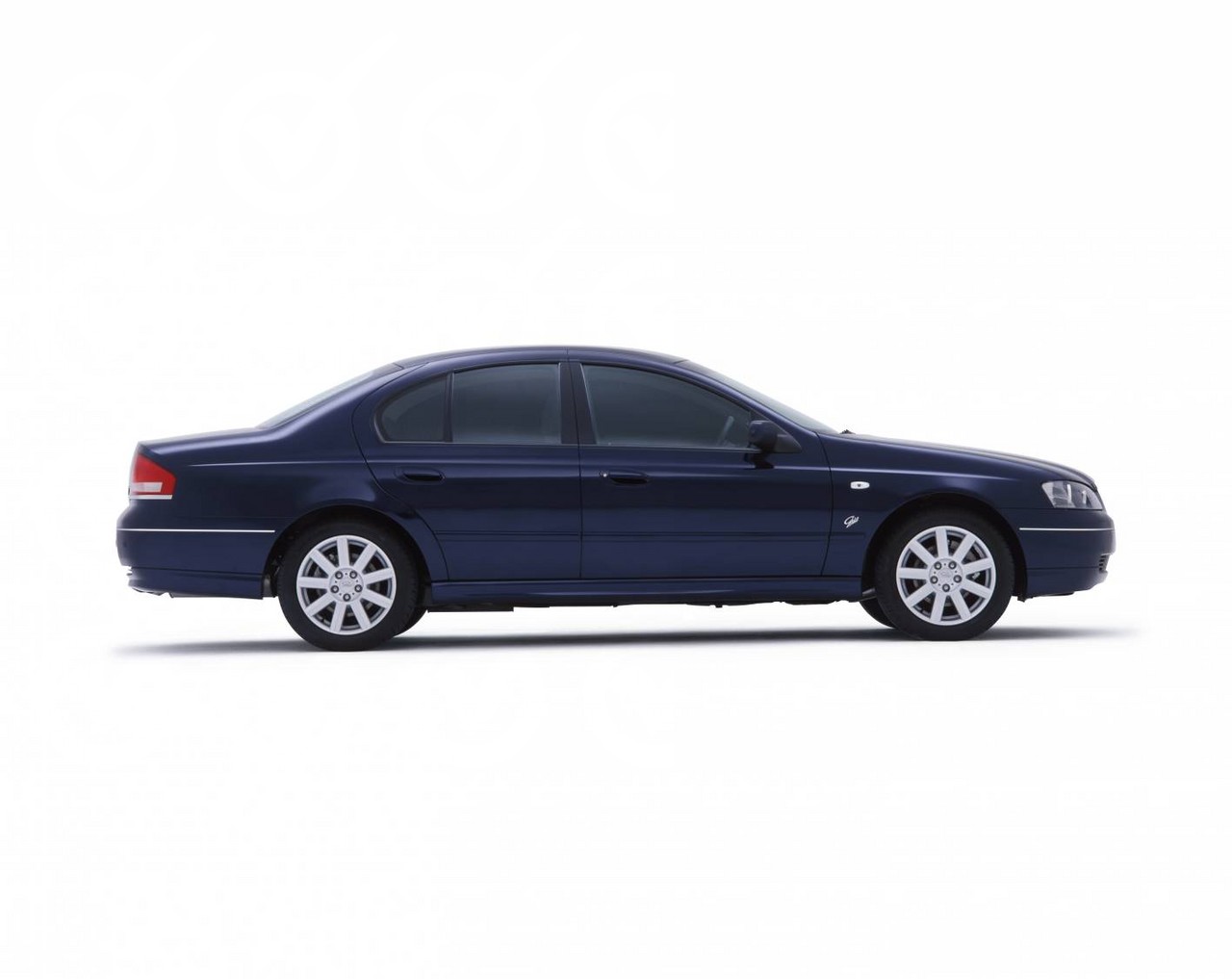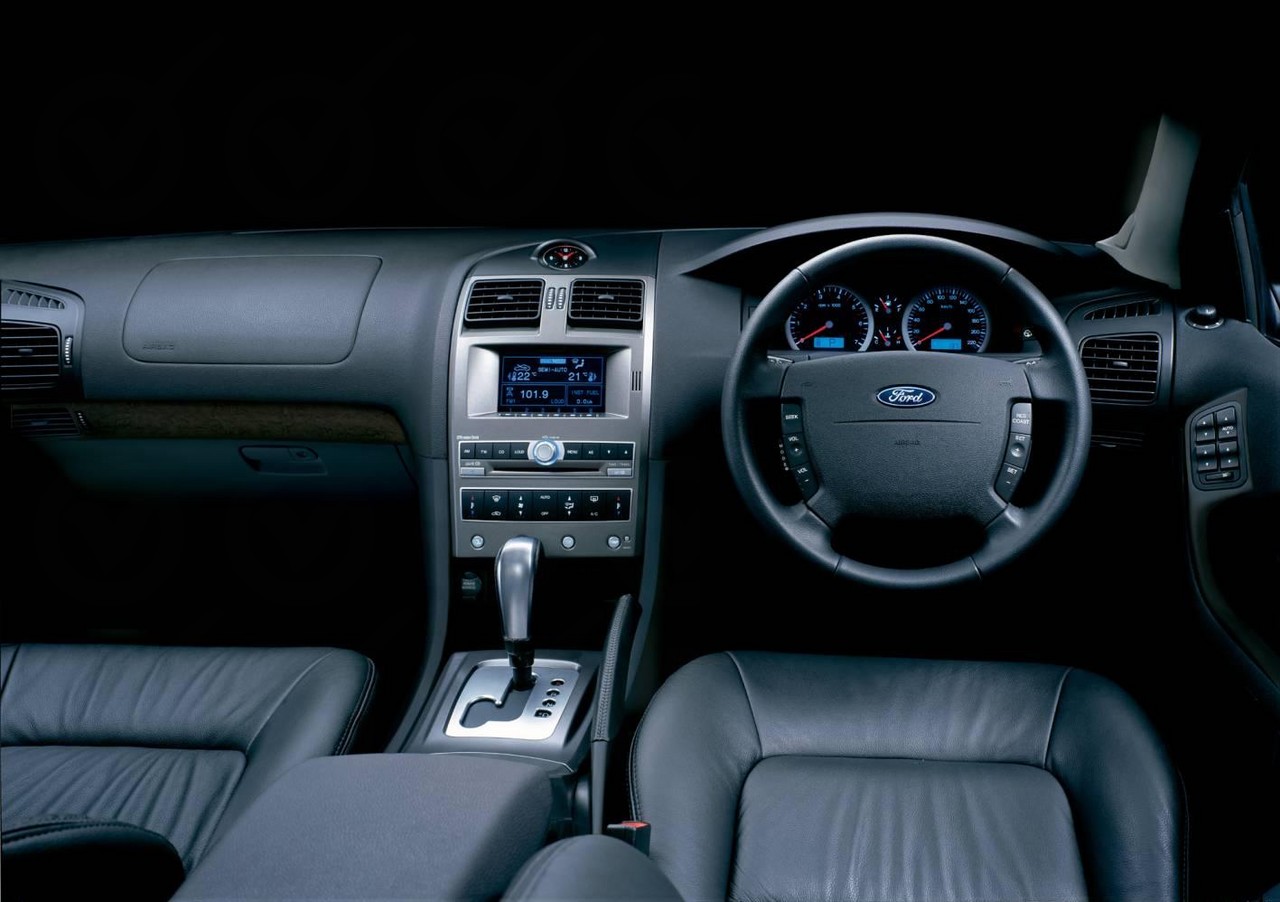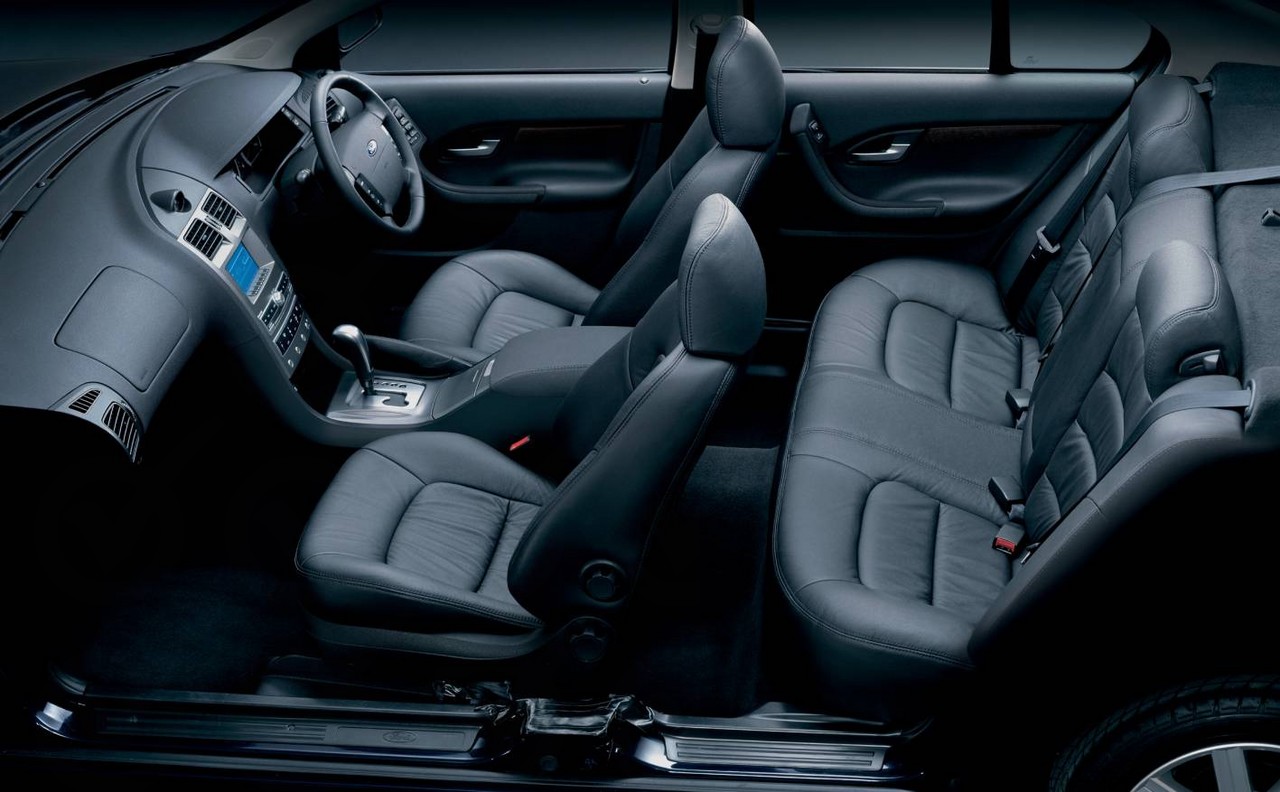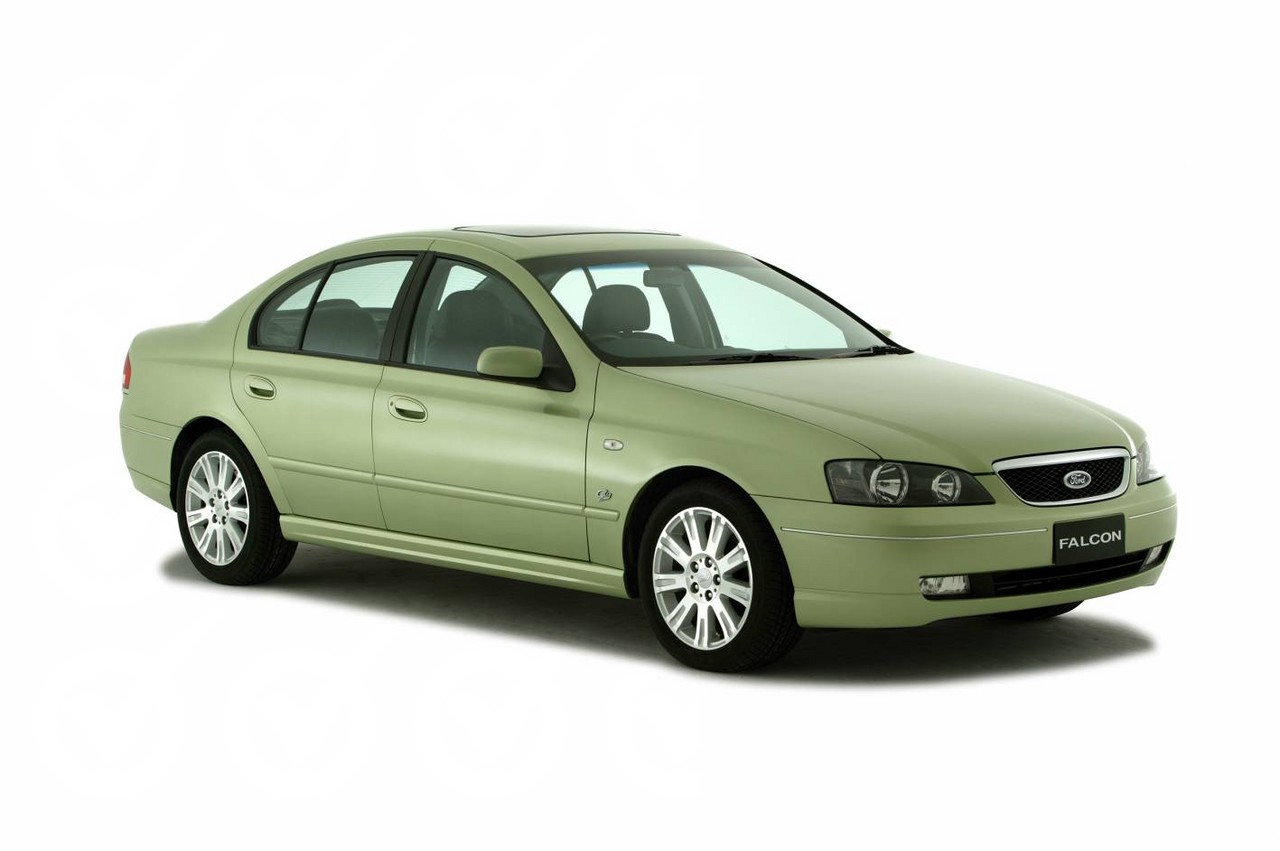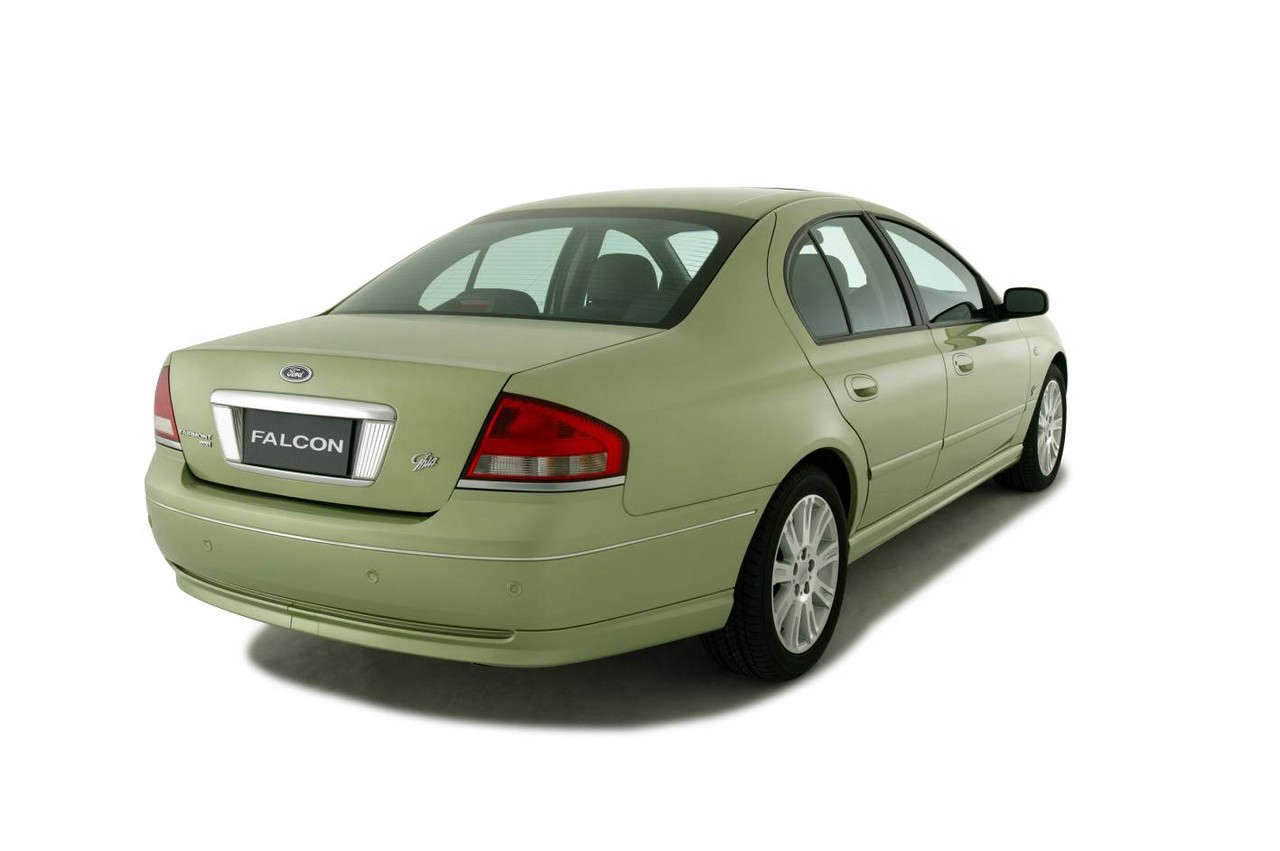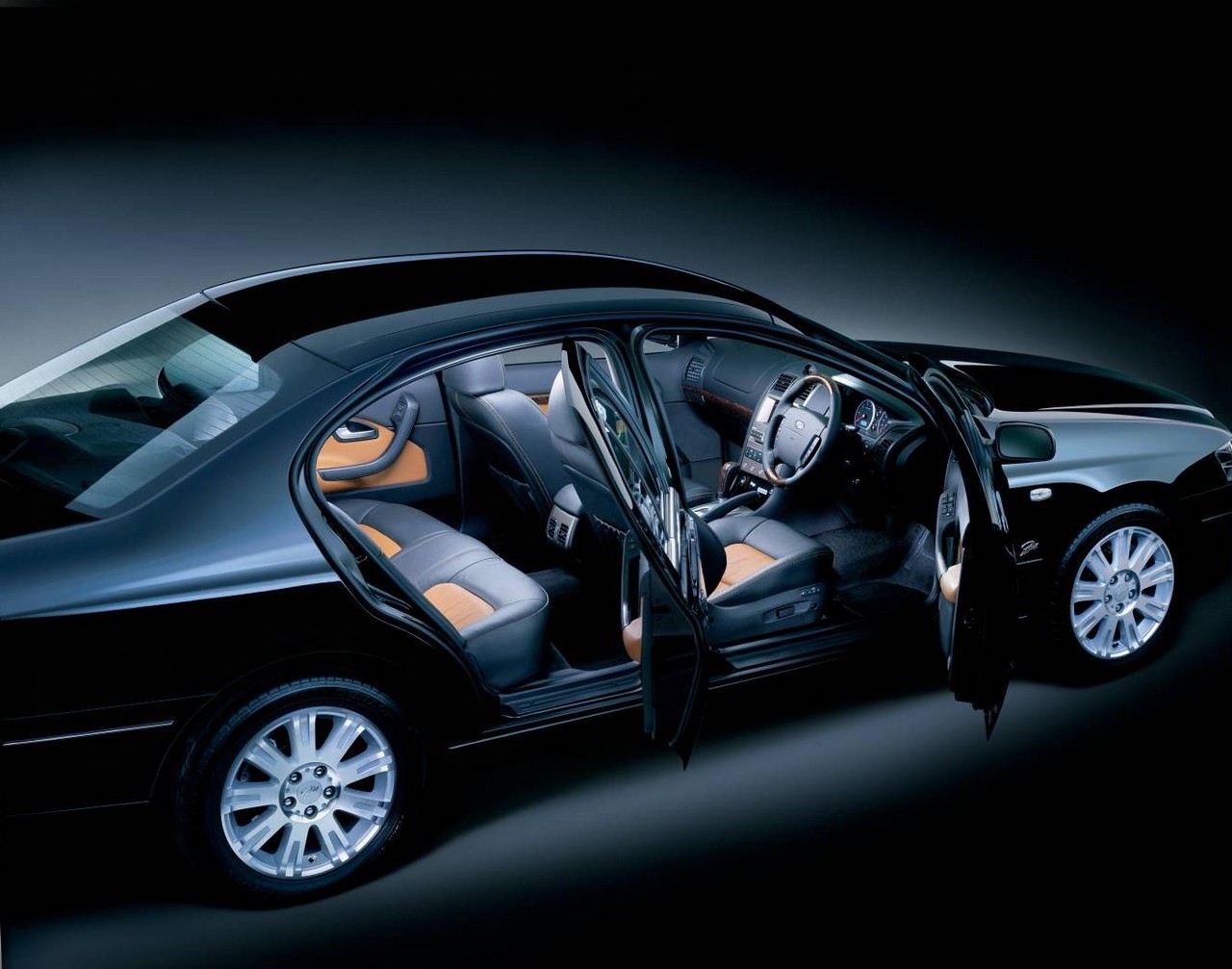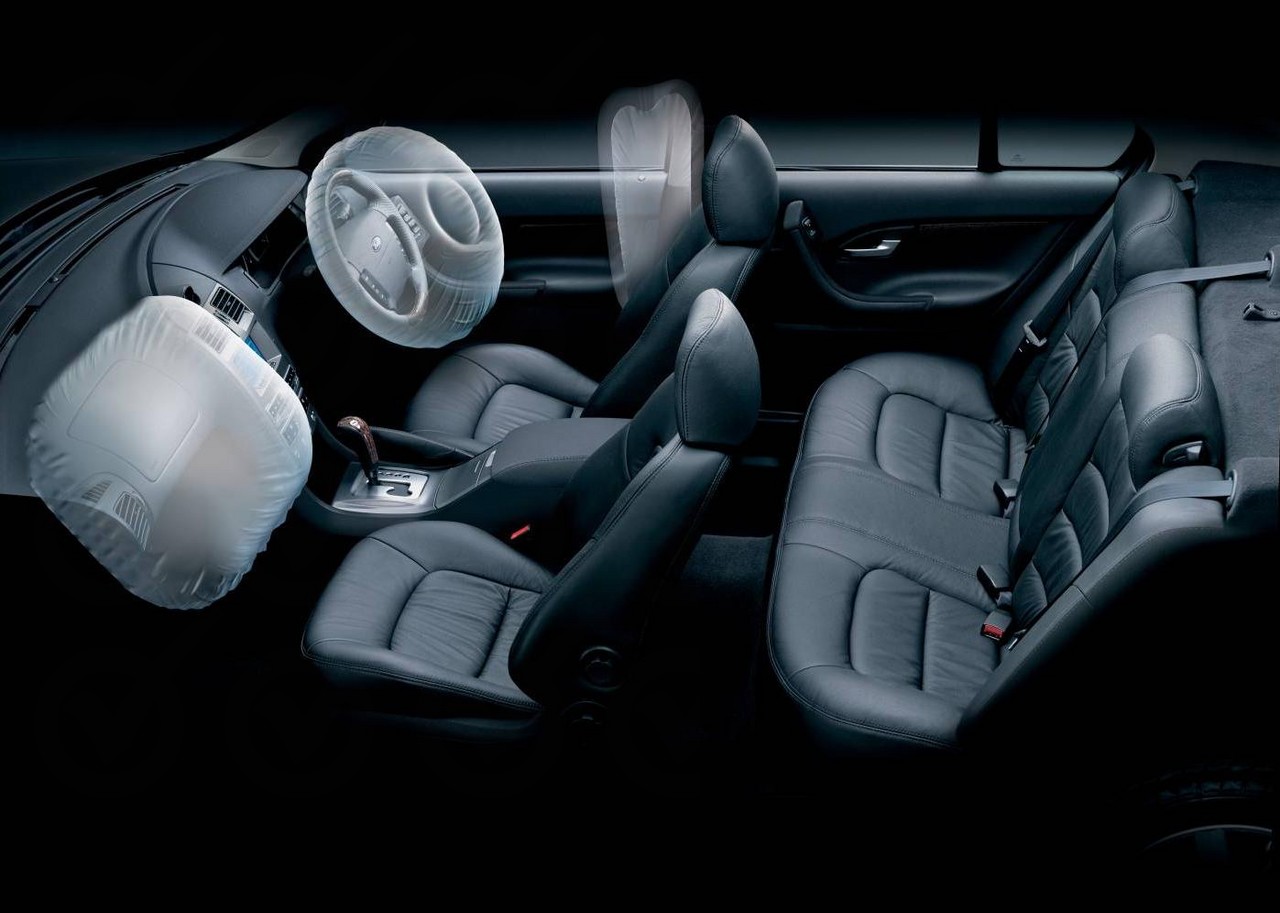
- Responsive 4.0-litre six-cylinder engine
- Impressive ride/handling balance
- Comfortable and spacious interior
- Suspension, driveline and road noise
- Cast-iron 4.0-litre engines are heavy and not particularly fuel-efficient
- Low standard of interior fit and finish
- Overly sensitive steering
- Coolant lines for automatic transmission cooler susceptible to failure
Review: Ford BA.I Fairmont (2002-04)
Overview
Released in October 2002, the BA Mk.I (BA.I) Fairmont was a large, rear-wheel drive sedan. Based on the BA Falcon , and manufactured in Campbellfield, Victoria, the Ford BA Fairmont and Fairmont Ghia were available with either a 4.0-litre inline six cylinder petrol engine or a 5.4-litre V8 petrol engine.
Engines: Barra 182 and Barra 220
Of the engines,
- The 4.0-litre Barra 182 inline six-cylinder petrol engine had a cast iron block, a cast aluminium cylinder head, double overhead camshafts (DOHC, simplex chain-driven), dual infinitely variable camshaft adjustment (within a 60 degree range), four valves per cylinder, Duratec-style finger followers, a dual resonance inlet manifold, coil-on-plug ignition and a compression ratio of 9.7:1. Compared to its Intech predecessor, changes for the Barra six cylinder engine included a new cylinder head (50 per cent stiffer than its predecessor), forged camshafts (previously cast iron), new combustion chambers, port design, a single chain drive for the camshafts, electronic ‘drive by wire’ throttle control, internal exhaust gas recirculation, a crank-mounted oil pump, new knock sensors (for improved performance on premium unleaded fuel) and an upgraded Powertrain Control Module (PCM). The rev limit was also raised to 6000 rpm (previously 5700 rpm); and,
- Manufactured at Ford’s Windsor plant in Canada, the 5.4-litre Barra 220 V8 engine had a cast iron block, a cast aluminium cylinder head, sintered connecting rods, a single overhead camshaft (SOHC), variable camshaft timing (over 60 degrees relative to the crankshaft), three valves per cylinder (two intake, one exhaust), roller finger followers, coil on plug ignition and a compression ratio of 9.7:1. Compared to its 4.9-litre Windsor V8 predecessor, changes included a stiffer block, reshaped pistons (with longer side skirts), magnesium cam covers, electronic throttle control, internal exhaust gas recirculation and failsafe-cooling protection (previously limited to inline six cylinder engines).
Transmissions
The Ford BA Fairmont had four-speed BTR M93LE and BTR M97LE automatic transmissions for the six- and eight-cylinder engines, respectively. For the BA range, changes for the automatic transmissions included a higher contact ratio gear set, a new design alloy plate (finned) transmission oil cooler and upgrades for the valve body, pump assemblies and torque converters.
Development and dimensions
Compared to its AU Fairmont predecessor, the BA Fairmont chassis achieved an 88 per cent increase in torsional rigidity. Other developments for the BA Falcon and Fairmont included:
- Independent rear suspension (detailed below) and a new two-piece drive shaft with a constant velocity (CV) joint at the differential;
- A new alloy cross member under the transmission with alloy mountings;
- A stainless steel exhaust system was fitted as standard and, for sedans, exhaust capacity increased to 36 litres (previously 17 litres);
- A stiffer steering column, quicker steering ratio (2.8 turns lock-to-lock) and revised steering gear;
- New hydraulic engine mounts; and,
- New insulating foam between the body and carpets.
Relative to the AU Fairmont , the BA Fairmont sedan was 9 mm longer (at 4916 mm), 6 mm narrower (1864 mm), 37 mm lower (1444 mm) and had a 36 mm longer wheelbase (2829 mm); its drag coefficient also decreased to 0.292 Cd (previously 0298 Cd). As a result of the stiffer chassis and independent rear suspension, kerb mass increased by 144 kg for the standard Fairmont.
Suspension
The Ford BA Fairmont had double wishbone front suspension and independent rear suspension (IRS) which had three control arms:
- A forged upper control arm;
- A stamped front lower control arm; and,
- A stamped rear lower control arm.
Each control arm had a cross axis ball joint on the wheel assembly end and was attached to the subframe and knuckle. Furthermore, the ‘Control Blade’ was a stamped trailing arm which provided lateral support and acted as a vertical pivot point.
| Engine | Trans. | Peak power | Peak torque | |
|---|---|---|---|---|
| Fairmont, Fairmont Ghia |
4.0-litre Barra 182 petrol I6 | 4sp auto | 182 kW at 5000 rpm | 380 Nm at 3250 rpm |
| 5.4-litre Barra 220 petrol V8 | 4sp auto | 220 kW at 4750 rpm | 470 Nm at 3250-4000 rpm |
Safety equipment
Standard safety equipment for the Ford BA Fairmont included dual front airbags, front side airbags, ABS, electronic brake force distribution, traction control and front seatbelts with pretensioners and load limiters.
Brakes
The Ford BA Fairmont had 298 mm by 28 mm ventilated front brake discs with twin-piston callipers rotors and 303 mm by 16mm solid rear discs with single piston callipers.
ANCAP crash testing
In ANCAP crash testing , the related BA.I Falcon with dual front airbags – but not front side airbags as fitted in the Fairmont – received a four star adult occupant protection rating with a score of 27.27 out of 37.
Features: Fairmont and Fairmont Ghia
Standard features for the Ford BA Fairmont included 16-inch alloy wheels, a six speaker sound system with six-stack CD player, dual zone climate control air conditioning, velour upholstery with a two-tone ‘Stone’ trim interior, a four-way power adjustable driver’s seat, front passenger seat adjustable lumbar support, cruise control, a leather-wrapped steering wheel (with audio and cruise controls), automatic headlights, a 60/40 split and folding rear seat, remote central locking, power mirrors and windows, a height adjustable driver’s seat, tilt and reach adjustable steering wheel, illuminated footwells, maple woodgrain trim with mahogany highlights, a trip computer and an immobiliser.
The Ford BA Fairmont Ghia was further equipped with 17-inch alloy wheels with sports suspension, an eleven speaker sound system, leather seats, a six-way power adjustable driver’s seat, driver’s seat and mirror memory settings, a leather-wrapped gearshift and park brake, colour TFT screen with advanced trip computer functions, front cornering lamps, rear parking sensors, front door courtesy lamps, illuminated vanity mirrors, shopping bag net, automatically dipping passenger mirror when reversing, power adjustable pedals and woodgrain interior trim with a black and maple finish.
Review: Ford BA.II Fairmont (2004-05)
Overview
Released in October 2004, the Ford BA Mark II (BA.II) was a minor update for the Fairmont range. There were minor cosmetic changes, though the range itself was unchanged.
| Engine | Trans. | Peak power | Peak torque | |
|---|---|---|---|---|
| Fairmont, Fairmont Ghia |
4.0-litre Barra 182 petrol I6 | 4sp auto | 182 kW at 5000 rpm | 380 Nm at 3250 rpm |
| 5.4-litre Barra 220 petrol V8 | 4sp auto | 220 kW at 4750 rpm | 470 Nm at 3250-4000 rpm |
Features
Standard features for the BA.II Fairmont were extended to include rear parking sensors and power adjustable pedals. The Fairmont Ghia was fitted with new 17-inch alloy wheels and a leather/woodgrain sports steering wheel and gearshift.
Related links
